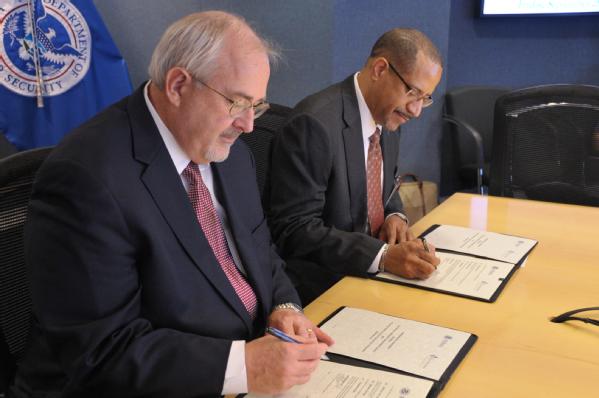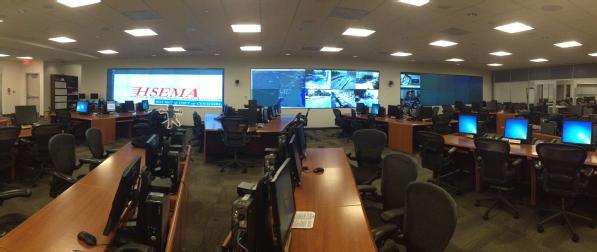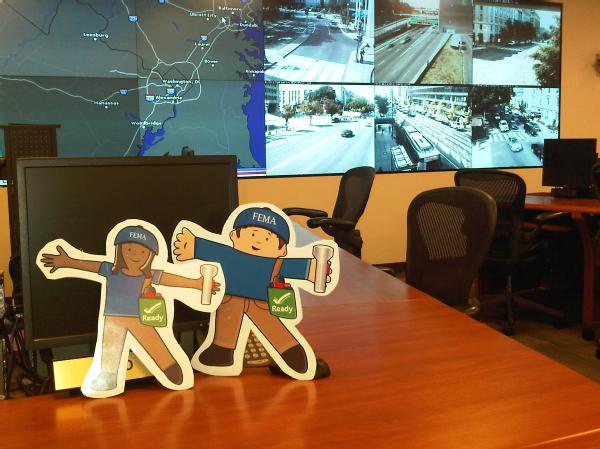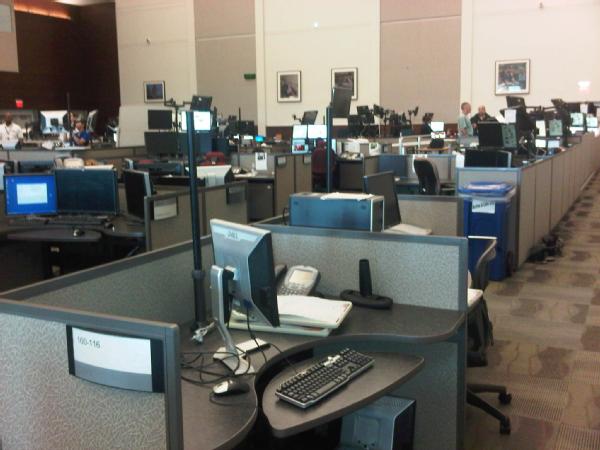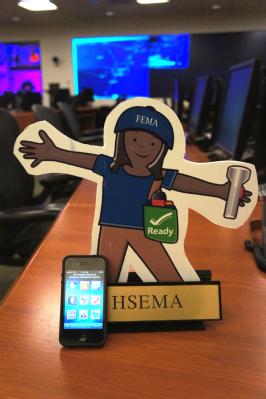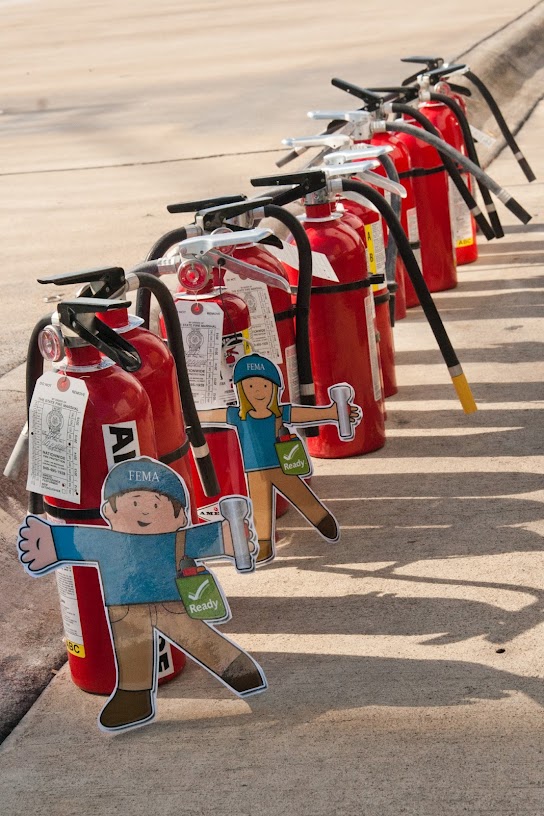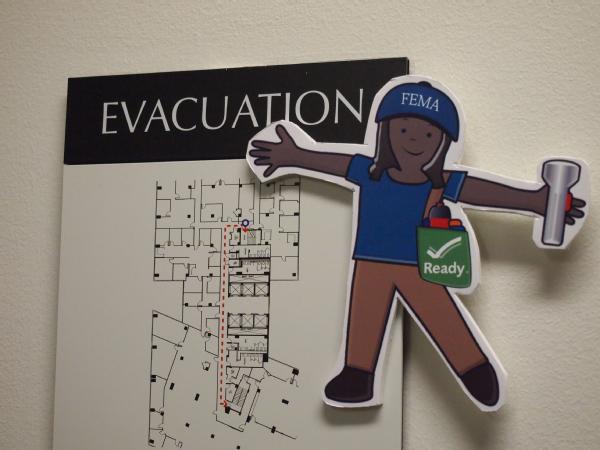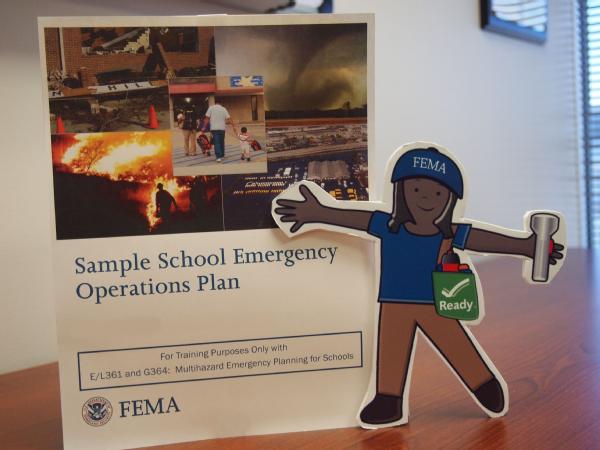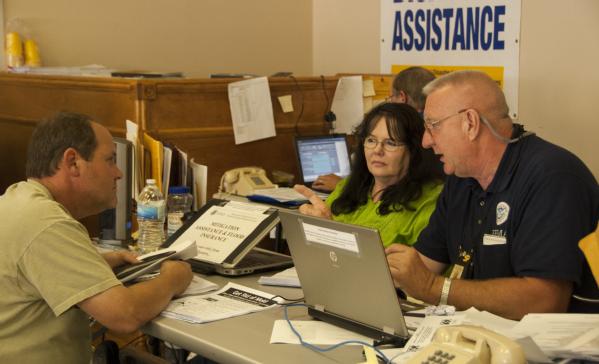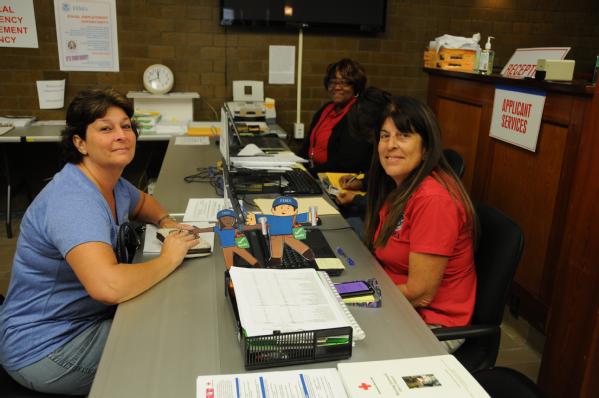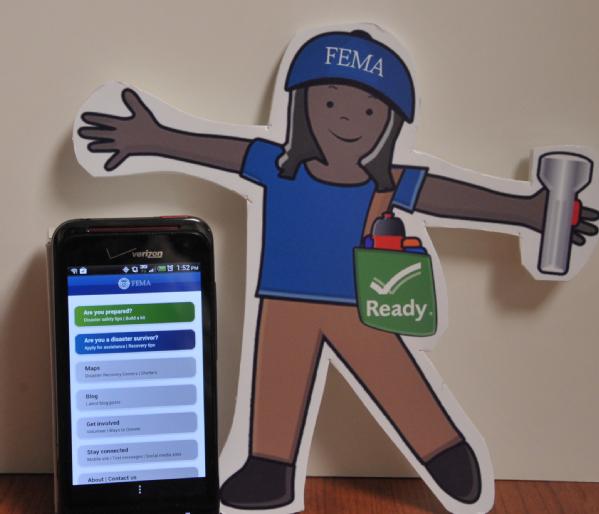Last Friday, I had the opportunity to meet the second group of the inaugural class of FEMA Corps during their induction ceremony in Vinton, Iowa. Soon, this group will join their fellow FEMA Corps inductees in regional offices and joint field offices around the country. Similar to the induction ceremony in Vicksburg, I couldn’t help but come away from this ceremony energized, knowing this group of young people is sharply focused on making a difference in their world – particularly in the lives of disaster survivors.
For those that don’t know, FEMA Corps is a program that establishes a service cadre of 18-24 year olds dedicated to disaster response and recovery. The graduates of the program will contribute to a dedicated, trained, and reliable disaster workforce by working full-time for ten months on federal disaster response and recovery efforts. FEMA Corps sets the foundation for a new generation of emergency managers – promoting civic engagement, community service, and teamwork – all while strengthening the nation’s disaster response by supplementing FEMA’s existing Reservist workforce.
The program was created through a partnership between FEMA and the Corporation for National and Community Service.
Amelia Rubin, one of the new inductees, addressed her peers at last week’s induction ceremony, highlighting the limitless potential of the young people blazing a trail in the newly formed FEMA Corps program.
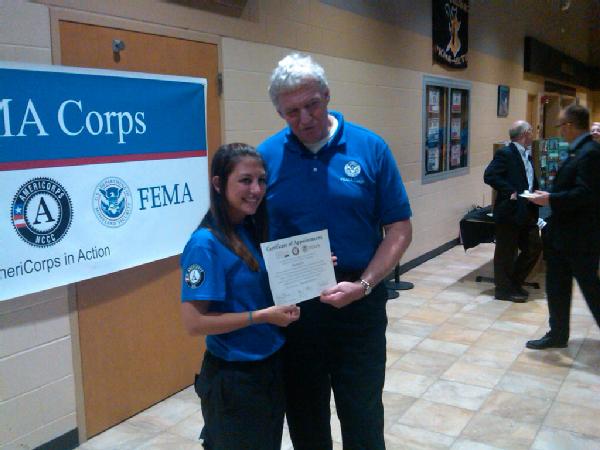
I stopped for a photo with Amelia Rubin, who provided an inspiring speech at the induction ceremony of the inaugural FEMA Corps class from Vinton, Iowa.
Amelia’s speech is worth sharing as her words echo the enthusiasm and optimism I saw in every one of our newly inducted FEMA Corps members. I hope that reading it through this blog post will transmit the same level of energy felt by those in the room. Here is Amelia’s speech:
Good evening distinguished guests, team leaders, family, friends, and fellow corps members. As you know we are celebrating a new collaboration and our first FEMA-Corps class! We are pioneers! According to Merriam Webster Dictionary, a pioneer is: a person or group that originates or helps open up a new line of thought or activity or a new method or technical development.
As pioneers forging the road ahead in the new partnership between FEMA and the Corporation for National and Community Service, we have a very special responsibility, gift, and challenge. It is a scary gift, but we have to have faith; in ourselves, our team and unit leaders, and our mission.
To quote Martin Luther King Jr., “Faith is taking the first step even when you don't see the whole staircase.”
We have the privilege of helping to create our staircase, the challenge of having and keeping the faith when we can’t see the next stair, and the responsibility to keep walking until we’ve reached the end. We’ve been working so hard these last four weeks, so walking up this staircase is a well-earned challenge that we are totally capable of, we just have to keep a positive mental attitude.
Our attitude will influence not only our time here as a group, but the work we do for the communities we are sent to, and the people from those communities whom we hope to help during their times of need. A quote I really like from Grandma Moses is “Life is what we make it, always has been, always will be.”
Grandma Moses was a farm wife in the late 1800s and is cited as an example of someone who has discovered her passion (which for her was painting American folk art) at a late age and decided to pursue it anyway. We have the opportunity to pursue our passion right now! I mean, that passion, burning as a small flame in our chests, is what led us here in the first place. Once we all got to campus and started our training, those little flames came together to create a raging wildfire. During our training, we have learned how to control that fire and use it to create change and help new things grow.
Even though we have been given informative, thorough training by both National Civilian Community Corps staff members and FEMA representatives, being the first anything can be a mystery. Neil Armstrong said, “Mystery creates wonder and wonder is the basis of man's desire to understand.” We as class 19 are embracing the wonder and desire to understand and coupling that with our shared ambitions to make a difference in the world we live. I can’t think of a more powerful force than this. So, also in the words of Neil Armstrong, let me say to you, NCCC Class 19 and first FEMA-Corps class of the North/central Region, let’s make sure that even though “This is one small step for [us]…” it will be “one giant leap for mankind.”
Great job, Amelia! As evidence Amelia’s speech, the FEMA Corps members are excited and energized to become part of the FEMA team.
Congratulations to all the new members of our inaugural FEMA Corps class! To learn more about the FEMA Corps program and how to get involved, visit fema.gov/fema-corps.

